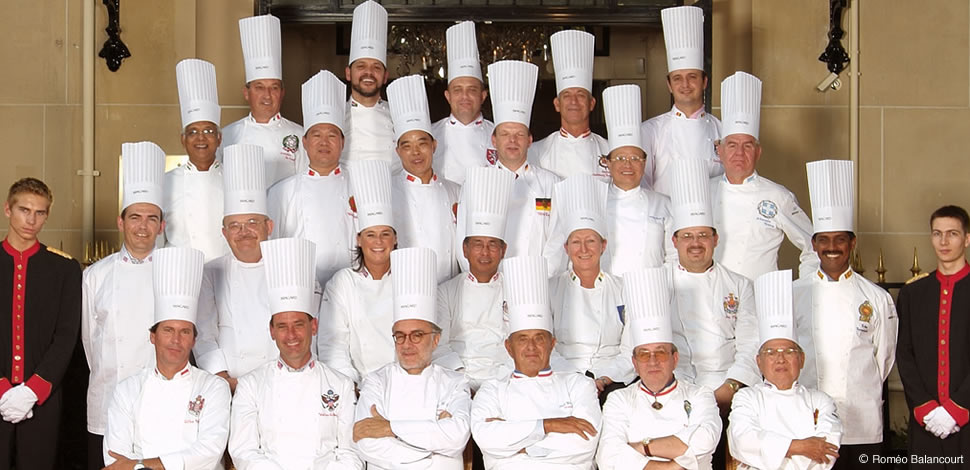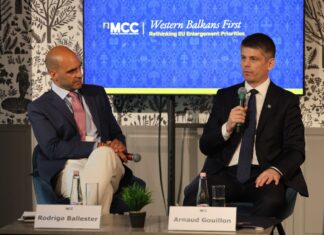The theme of the 2015 Expo is food. The U.S. needs a culinary diplomacy plan that is both inclusive and exclusive.
 Next year will bring Expo 2015, which is set to take place in Milan, Italy with the theme “Feeding the Planet, Energy for Life.” It is an important and timely topic around which to center the Expo, in part due to the current social popularity of food—see for example the explosion of television, social media, and publications devoted to the topic—and more importantly, due to the heightened attention paid worldwide to issues of nutrition, agriculture, and food sovereignty. Countries and companies are going into high gear to prepare for the Expo, anticipating the opportunity to show off on a global stage. 142 nations and regions, representing 88% of humanity, plan to be there.
Next year will bring Expo 2015, which is set to take place in Milan, Italy with the theme “Feeding the Planet, Energy for Life.” It is an important and timely topic around which to center the Expo, in part due to the current social popularity of food—see for example the explosion of television, social media, and publications devoted to the topic—and more importantly, due to the heightened attention paid worldwide to issues of nutrition, agriculture, and food sovereignty. Countries and companies are going into high gear to prepare for the Expo, anticipating the opportunity to show off on a global stage. 142 nations and regions, representing 88% of humanity, plan to be there.
The theme and location make Expo 2015 a site ripe for culinary diplomacy. I’ve defined it as “the use of food and cuisine as an instrument to create cross-cultural understanding in the hopes of improving interactions and cooperation,” or more colloquially as “breaking bread to win hearts and minds.” Every nation and region with a pavilion is being given an extraordinary chance to showcase its unique contribution to the world’s cuisine, as well as its own approach to solving global hunger. From Switzerland’s towers of non-replenishing Swiss food products showing the effects of consumption on supply to China’s focus on “super rice,” each pavilion will reflect its nation’s culinary heritage while also focusing on the theme of “feeding the planet.”
The United States, for its part, has submitted a proposal for its pavilion, “American Food 2.0.” A partnership between the James Beard Foundation, The International Culinary Center, and the American Chamber of Commerce in Italy, the pavilion will be built on the pillars of diversity and responsibility. Its stated goal, according to a White House Press Release, is to “use state-of-the-art digital media and other novel approaches to showcase American leadership and innovation in global food security, agriculture, and cuisine and lay the seeds for enhanced trade and investment between the United States and Italy.” The pavilion itself will take the form of an iconic American farm building—a granary—and will lead visitors around the 50 states on a journey “from farm to table,” to discover “the rich cultural, scientific, and culinary tapestry” that makes America America. There will also be food trucks, central to the new American culinary landscape, traveling throughout Milan to increase the range of the pavilion.
Not much else has been publicly announced about America’s offering at Expo 2015. The current plan is a very strong start. I applaud the planners’ intention to touch on culinary tradition from each of the 50 states (though I assume it will stay away from the snarky generalizations propagated in Deadspin’s much-circulated ranking of each state’s food highlights). Focusing on the recent return to the ages-old concept of “farm-to-table” will show off American culinary values of the 2010s, including our newly rediscovered appreciation for farmers. Food trucks, too, though maybe seen as a fad, are an important aspect of the current culinary landscape.
Beyond the strong start, though, I look forward to seeing more thought put into planning. It would be fascinating, for example, to encourage American states to interact with Expo-goers more directly, thereby engaging in paradiplomacy. Paradiplomacy refers to the engagement by sub-national areas—regions, states, cities—in international public diplomacy efforts (see here for a longer discussion on the concept from political scientist Stefan Wolff). Encouraging states to show off regional barbecue varieties, agricultural uniquities, and historical preferences, as well as various approaches to feeding their own and other hungry people, would go far to display our richly nuanced nation whose culinary and agrarian differences greatly surpass the sum of its parts. Although the plan does include the intention to highlight each state, my worry is that seeing states through a national filter will bring out only stereotypical takes on foods, instead of more rich local narratives being broadcast. American food, we know, is not hegemonic—and we shouldn’t portray it as a single entity.
This is also an opportunity to take a critical look at some of the American food trends that have gone global. While many Americans may not be particularly proud of the far reach of McDonald’s, KFC, and Starbucks, it may be fascinating to look at each of these American food institutions’ origins—and their spread. Why are Americans deeply associated with burgers and fries—where did this dish come from? What is the history of fried chicken, and its unique place in American culinary tradition? What of the first, second, and third waves of coffee appreciation, and where does Starbucks fit into that? Furthermore, how does America’s coffee consumption affect the economies of coffee-producing nations, and can we work to make that relationship more equitable? It would be enlightening to investigate these questions through a critical lens, as long as we don’t mythologize and aggrandize (or, gasp, get sponsorship from) the multinational chains in question.
A final idea. We are a nation of immigrants, generations of whom have come to the U.S. and brought ingredients, recipes, and techniques from their homes. Expo 2015 presents an opportunity for us to look back and draw the connection between new and old worlds; through stories and tastes, visitors could discover their own nation’s impact on American cuisine. Furthermore, showcasing the cuisine of indigenous Americans, like the work of the brilliant Mitsitam Café at the Smithsonian National Museum of the American Indian, would teach Expo-goers about traditional American foods, about which most people, including Americans, know unfortunately little.
These are just a few thoughts on where the American representation at Expo 2015 could go. We will see how plans change when different cooks start stirring the pot, including which corporations choose to foot the $45 million bill. The U.S. Pavilion at Shanghai Expo 2010, with sponsors including Pfizer, Boeing, and PepsiCo, was generally regarded as a poor representation of our nation. Let’s try to do better this time, and show off something our country does well: food.













